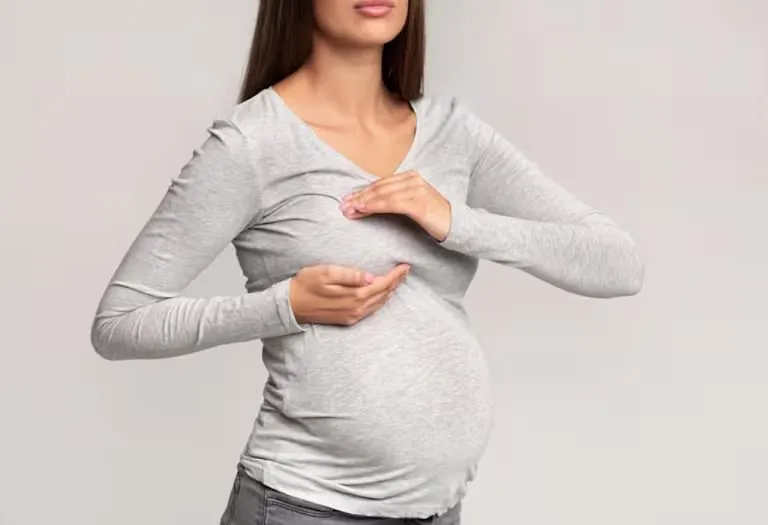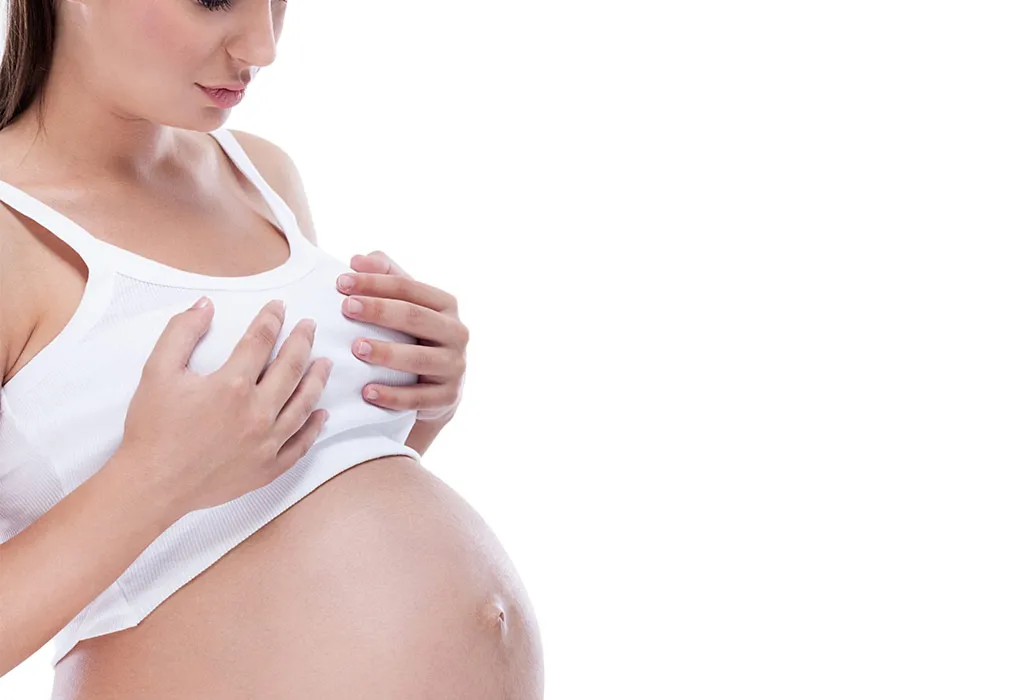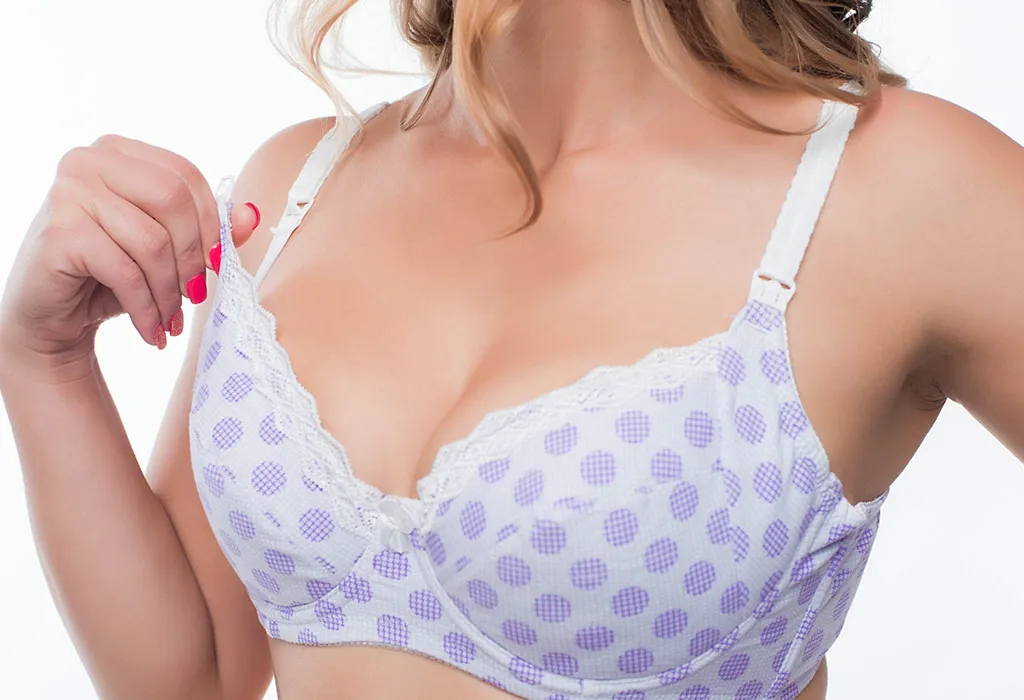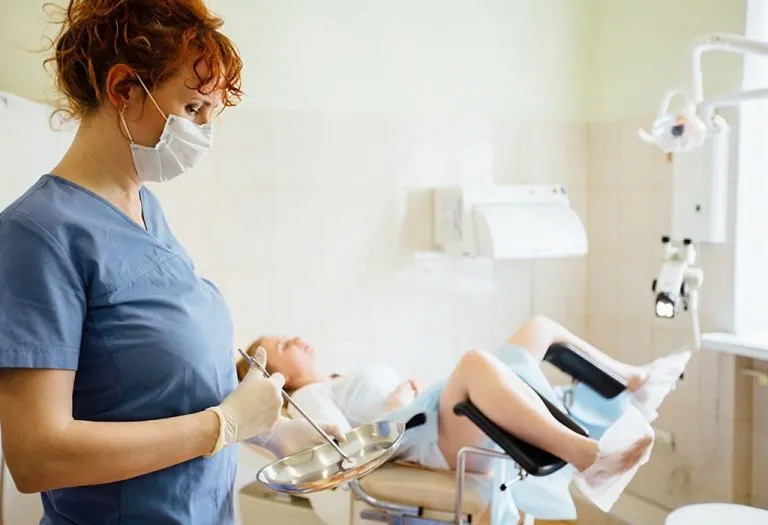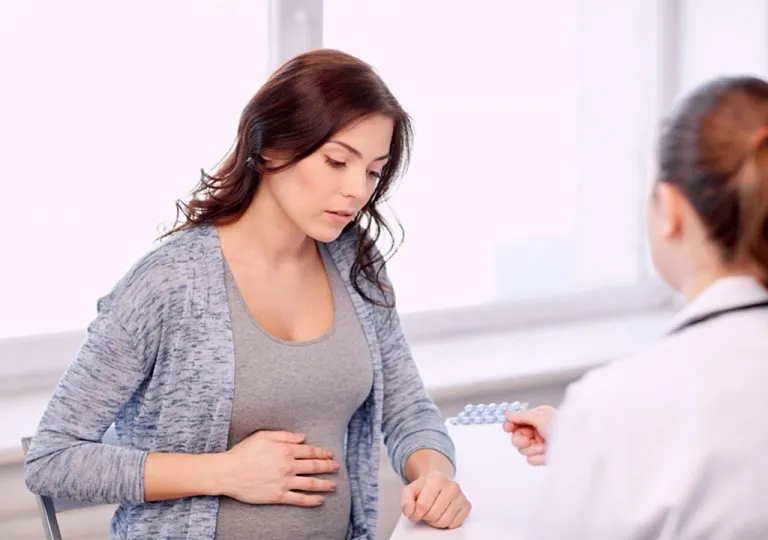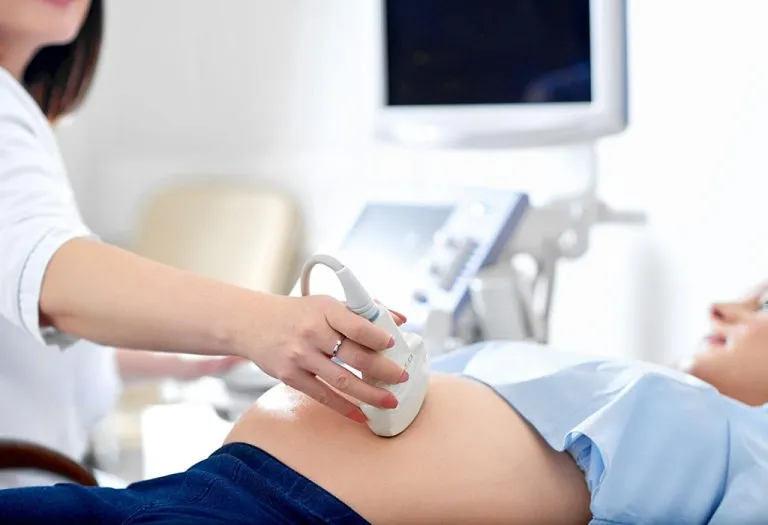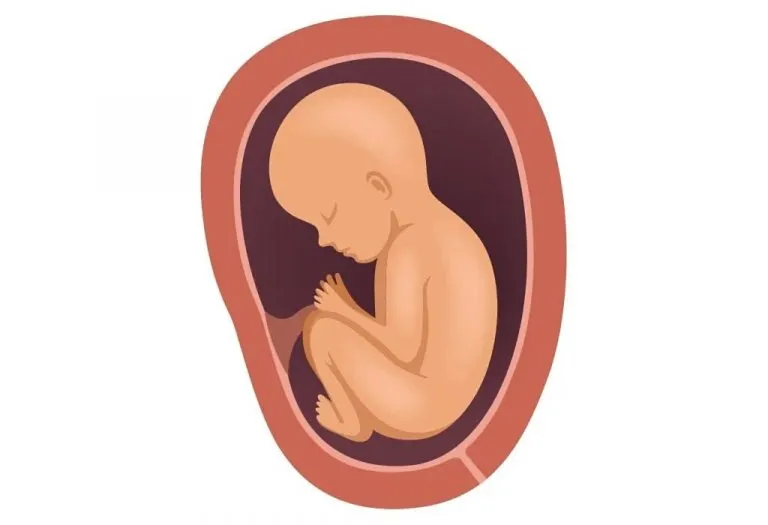Breast & Nipple Changes During Pregnancy – What to Expect?
Understanding the natural breast and nipple changes your body goes through in pregnancy

Breast pain is among the many signs and symptoms that indicate that you might be pregnant before taking a pregnancy test. Pregnancy is a life-changing experience for a woman, not only because it creates a new life but because it alters her body to accommodate and nurture a growing baby for nine months and also prepares to provide nourishment after birth. Like your muscles loosen up, your rib cage widens, your tummy stretches, and your internal organs shift, your breasts grow and change to prepare you to feed your baby when she is born. However, breast growth during pregnancy is not always a pleasant experience. Most women complain of pain, but the level of discomfort varies. Read on for a quick overview of what breast and nipple changes during pregnancy to expect if you are expecting!
Breast Changes in Pregnancy
As with almost every other symptom related to pregnancy, breast tenderness in pregnancy is attributed to two main culprits, oestrogen and progesterone (1). The very same hormones which led to the formation of your breasts when you were a pre-pubescent teen, now kick into action to prepare you for lactation. They ensure that your milk ducts widen and that your breasts receive ample blood supply. Breast pain in early pregnancy is common, as you experience most of the changes in the first trimester, that is, between two to four weeks of conception.
First Trimester
Here are some breast changes in the first trimester of pregnancy, from week 1 to week 12 (2) (3):
1. Changes in Weeks 1-3
Breast changes start as soon as implantation occurs. Many changes occur during the second week, and you will face increased sensitivity, especially on the sides where the internal mammary arteries are. Milk ducts and alveolar buds grow rapidly during this period.
2. Changes in Weeks 4-6
Changes in the nipples are noticeable during this period. The increase in blood supply causes a prickling sensation and tingling around the nipples. Temperature changes may also trigger tingling. At the end of this phase, increased pigmentation will make your areolas appear darker and the nipples more prominent.
3. Changes in Weeks 7-9
In the seventh week, the breasts start growing as fat accumulates and milk ducts grow further. Lobules are formed by the growing alveoli, making them feel sore and tender. Montgomery’s tubercles or small pimples around the areolas appear around week 8. By week 12, the dark areolas are surrounded by a second areola of lighter tissue and inverted nipples are corrected.
4. Changes in Weeks 10-12
This is the period when the nipples protrude fully, and you are sure to notice the difference, especially if it is your first pregnancy.
Second Trimester
Here are the breast changes in the second trimester of pregnancy that typically occur in women, divided into week ranges:
1. Changes in Weeks 13-15
During this period, the breasts may grow and become more tender. The areolas (the darker area around the nipples) might darken in colour and become more extensive. Nipples can become more prominent and sensitive.
2. Changes in Weeks 16-18
By the 16th week, many women experience colostrum leakage, a yellowish fluid precursor to breast milk (4). The Montgomery’s tubercles, small bumps on the areolas, may become more noticeable. Veins on the breasts may become more prominent.
3. Changes in Weeks 19-21
The breasts might continue to increase in size, becoming heavier. The areola of breast changes during pregnancy, and it will become more prominent. Stretch marks can develop on the breasts due to the rapid growth.
4. Changes in Weeks 22-24
By the 22nd week, the breasts are usually noticeably larger than before pregnancy. The Montgomery’s tubercles may become even more pronounced. Some women may experience increased sensitivity in the nipples.
Third Trimester
Here is an overview of breast changes in the third trimester, week by week:
1. Changes in Weeks 25-27
The breasts may have reached their maximum size and weight during these weeks. The areola changes in pregnancy around nipples continue to darken and become more pronounced. Veins on the breasts may become even more noticeable. Some women may experience a tingling or itching sensation in the breasts due to stretching skin.
2. Changes in Weeks 28-30
By the 28th week, colostrum leakage may become more frequent. The breasts may feel even heavier and fuller. Nipples might become more sensitive. Stretch marks on the breasts can become more prominent (5).
3. Changes in Weeks 31-33
The breasts may continue to prepare for breastfeeding, with increased blood flow and glandular development. Nipples may become more erect and sensitive. Some women might experience changes in the size and shape of their breasts as they prepare to produce milk. As pregnancy hormones fluctuate, some women may notice variations in breast tenderness.
4. Changes in Weeks 34-36
The breasts may still produce colostrum, indicating they are preparing for breastfeeding. Nipple sensitivity might persist or increase. The breasts can feel heavy and may cause back discomfort for some women. Skin changes, such as darkening of the areolas and stretch marks, might continue.
Common Breast Changes in Pregnancy
Changes in the breasts before and after pregnancy can be different for every woman. While the major changes occur during the first 12 weeks, breast development continues throughout pregnancy and is marked by the following changes:
1. Breast Growth
Breast enlargement is the most noticeable change during pregnancy, but the pattern of growth may differ from woman to woman. While some women experience a slow and steady growth, others see growth-spurts. If it is your first pregnancy, you may find that your bra-size has increased by as much as one cup, and your breasts feel fuller and heavier. A sudden increase in size stretches your skin and may cause itchiness. It is not uncommon for stretch marks to appear, but these are mostly temporary, and you need not be too concerned about them (1).
2. Breast Tenderness
Soreness or breast tenderness is most noticeable during the first trimester and usually eases as the second-trimester approaches. Caused by a surge in hormones, soreness can make the most regular daily tasks uncomfortable (6).
3. Visible Veins
The increased blood flow in the body during pregnancy may lead to the occurrence of visible veins in the delicate skin of your breasts. This is one of the common boob changes in pregnancy, as your breast tissue becomes more active and prepares for feeding. This condition is temporary, and the veins usually return to their normal size after you give birth or stop breastfeeding, just like many other natural before and after pregnancy breast changes.
4. Lumps and Bumps
Some women may notice the development of lumps in the breasts. While most of these are benign, it helps to have them checked if you notice changes or new lumps. Most lumps are caused by galactoceles (milk-filled cysts), fibroadenomas (fibrous tissue) or cysts.
5. Nipple Changes While Pregnant
Pregnancy causes an increase in pigmentation in your nipples, also called areola. The changes in the third trimester include a growth in the size of the nipples and the appearance of Montgomery’s Tubercules.
6. Montgomery’s Tubercules
Appearing as small pimples around the areola, these bumps are named after an Irish Obstetrician who was the first to observe them. The number of bumps is different for each woman. These tubercles are believed to perform a protective function, as they secrete oil which keeps the areola moisturised and relieves sore nipples during pregnancy. Resist the urge to pop them, or you may end up with an infection (7).
7. Breast Leakage- Pregnancy Squirts
Leaky breasts are a common occurrence, even as early as 16 weeks into pregnancy. As the milk ducts prepare for their task post-delivery, they leak colostrum, a straw-coloured liquid. The colostrum is what your baby should drink right after birth, as it is rich in antibodies that protect your newborn.
8. Galactorrhea
While some degree of breast leakage (colostrum) is common during pregnancy, galactorrhea is a rarer condition where a woman experiences the production of actual milk from the breasts during pregnancy. Hormonal imbalances or certain medications can cause it and should be evaluated by a healthcare provider (8).
9. Polymastia or Supernumerary Nipples
In rare cases, some women may have additional breast tissue or extra nipples (supernumerary nipples) that become more noticeable or even develop milk-producing capability during pregnancy. This condition is known as polymastia or polythelia. It usually doesn’t pose health risks but may require monitoring or treatment if complications arise (9).
Tips for Relieving Breast Pain
While breast and nipple changes in pregnancy, along with the discomfort associated with them, are unavoidable, there are several things you can do to make the transition easier for yourself:
1. Wear a Maternity Bra
Make sure you get yourself measured for a new bra whenever you feel constricted by the changing breast shape during pregnancy. Measuring at the end of the first trimester, and once at the end of the third trimester, and buying well-fitting bras will ensure that your breasts are always well supported. Make every purchase cost-effective by choosing maternity bras, which you can use after giving birth. Adjusting to the changing breast size during pregnancy is the surest way to avoid breast tenderness (10).
2. Moisturise
Get rid of itchy breasts during pregnancy by making sure your skin is moisturised. As the skin stretches over your growing breasts, it needs to be nourished to remain soft and supple.
3. Put Away Underwired Bras
It was earlier believed that underwired bras could hamper blood flow and milk production, but research has debunked this theory. However, most women find underwired bras uncomfortable for sore breasts. If your bra is adding to your discomfort, make sure you switch to one without an underwire.
4. Choose Cotton for Comfort
A hypoallergenic fabric, cotton not only protects against irritation and skin infections but also makes sure your skin can breathe. The soft fabric absorbs sweat, keeping your skin clean and dry. Picking cotton bras brings much-needed relief.
5. Avoid Bumping Into Things and People
Prevention is the best way to ensure you are not jarred by occasional pain. Look where you are going, whether you are at home or outside so that you are not hurt by physical contact.
6. Ask Your Partner to Take a Hands-free Approach
Sore breasts during pregnancy can come in the way of physical intimacy too. Make sure you share your problem with your partner and ask him to avoid touching your breasts.
7. Use a Warm Compress
Covering your breasts with a warm and wet towel is a great way to relieve pregnancy breast pain. A warm compress helps reduce swelling and tenderness by improving blood circulation.
Dietary changes go a long way in helping reduce breast discomfort during pregnancy.
8. Stay Hydrated
One of the reasons for sore breasts is water retention, which can be avoided if you drink plenty of water all day. This helps flush out excess hormones and fluid that cause pain.
9. Consume Less Salt
Some women find that reducing salt intake temporarily helps lower breast pain in pregnancy (11).
10. Consume Flax Seeds
Supplement your water, fruit juice or yoghurt with a spoonful of ground flaxseeds. Rich in nutrients and a good source of fibre, flax seeds help alleviate breast soreness.
11. Follow Proper Diet and Nutrition
A healthy body is better equipped to handle breast pain. Consume vitamin and mineral-rich foods, including seeds and nuts, leafy greens, beans and cereal to reduce tenderness.
12. Cabbage Leaf Compress
Cabbage leaves have been traditionally used to relieve breast pain, particularly during breastfeeding or when experiencing breast engorgement. To use this method, refrigerate cabbage leaves until cool but not frozen. Place the chilled cabbage leaves on your breasts, covering the painful areas. Leave them in place for about 20-30 minutes or until the leaves warm to body temperature.
Breast Exams – When to See a Doctor?
While breast changes throughout pregnancy is normal and transient, as with every other symptom, it is something one must be aware of. Consult your doctor if you experience any unusual pain or discharge. Speak to your doctor if:
- You notice any rapid changes in lumps or increase in the number of lumps
- You notice blood leaking with the colostrum
- You notice rashes
Do Breasts Change After Pregnancy?
The journey of pregnancy and childbirth causes dramatic changes in women’s breasts. The breasts tend to grow during pregnancy, for milk production to nurture the child after delivery. Once you deliver your child, you begin lactating, and the breasts remain large as long as milk is produced. Many women also experience breast engorgement, which occurs when the breasts become too full due to breastfeeding issues or over-production of milk. This can be reduced by pumping milk after breastfeeding.
Some women’s breasts go back to their original size once the breasts stop producing milk, while others’ breasts may remain larger than the pre-pregnancy size. Some women also experience sagging as the breasts lose elasticity. The changes in each woman’s breasts are determined by genetics, breastfeeding duration, and fluctuation in weight. The nipples usually darken during pregnancy, gradually becoming lighter after childbirth.
Will Your Breast Return to Their Pre-Pregnancy State?
The extent to which your breasts return to their pre-pregnancy state varies widely among individuals. It depends on genetics, breastfeeding, weight fluctuations, age, and the number of pregnancies. While some women may experience minimal changes and find that their breasts return to their previous size and shape, others may notice more significant and lasting alterations. It’s essential to understand that these changes are a natural part of the pregnancy and breastfeeding process. Embracing and caring for your body during this transformative time is essential. If you have concerns about your breast changes and pregnancy, consult a healthcare provider who can provide personalised guidance and recommendations.
FAQs
1. Is nipple discharge during pregnancy normal?
Yes, many pregnant women experience a thin, yellowish discharge called colostrum, especially in the later months. This early form of milk is rich in nutrients and antibodies. Light leakage is normal, but if the discharge is bloody or foul-smelling, consult your doctor.
2. Should I worry if one breast is bigger than the other?
No, slight asymmetry is completely normal and often becomes more noticeable during pregnancy because each breast may grow at a different pace. This difference rarely affects breastfeeding and typically balances out after delivery or weaning.
Learning to deal with breast changes while pregnant is a part of embracing the many changes your body experiences. While the first and third trimesters see the maximum development, be prepared for mild discomfort from changes in the second trimester, too. As long as they do not pose a health risk, breast changes throughout pregnancy should not cause you any worry and are sure to fade as the pregnancy progresses.
Also Read:
Breast Cancer in Pregnancy
Breast Sagging After Pregnancy
Causes of Dark Nipple during Pregnancy
Tips to Take Care of Breast and Nipple during Pregnancy
Was This Article Helpful?
Parenting is a huge responsibility, for you as a caregiver, but also for us as a parenting content platform. We understand that and take our responsibility of creating credible content seriously. FirstCry Parenting articles are written and published only after extensive research using factually sound references to deliver quality content that is accurate, validated by experts, and completely reliable. To understand how we go about creating content that is credible, read our editorial policy here.
1. Breast Cancer Now – Breast changes during or after pregnancy
2. Cleveland Clinic – First Trimester
3. Johns Hopkins Medicine – The First Trimester
4. Cleveland Clinic – Colostrum
5. Johns Hopkins Medicine – The Third Trimester
6. Digital Health and Care Wales – Breast care and breast health in pregnancy
7. IVI – Montgomery Tubercles – an early sign of pregnancy?
8. Cleveland Clinic – Galactorrhea
9. Cleveland Clinic – Third Nipple
10. Cleveland Clinic – Breast Pain (Mastalgia)
11. El Camino Health – 8 Ways to Manage Breast Pain and Tenderness






